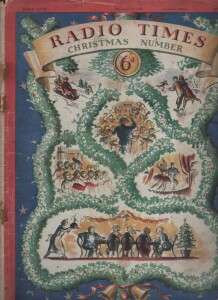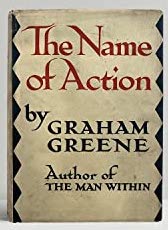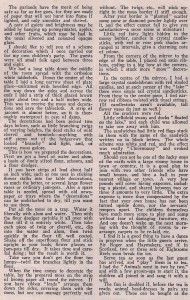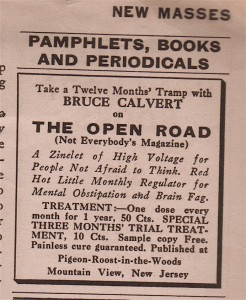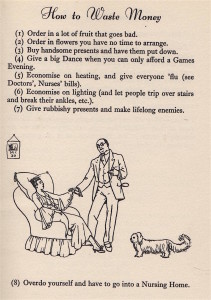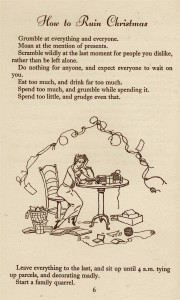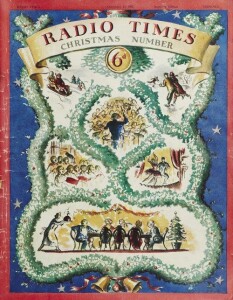 Following on from a recent Jot exploring what the BBC were offering as TV entertainment for Christmas 1932 — half an hour from 11 pm onwards showing either a singer crooning into a microphone, female dancers prancing about in special costumes, or a short poem or play – we at Jot HQ thought it might be interesting to examine what listeners could expect to enjoy throughout the rest of the festive season.
Following on from a recent Jot exploring what the BBC were offering as TV entertainment for Christmas 1932 — half an hour from 11 pm onwards showing either a singer crooning into a microphone, female dancers prancing about in special costumes, or a short poem or play – we at Jot HQ thought it might be interesting to examine what listeners could expect to enjoy throughout the rest of the festive season.
First, we should explain that in the ‘thirties the Radio Times, though ostensibly a guide to radio schedules, was also a kind of feature magazine in which along with the programme information could be found other entertainment in the form of short stories or feature articles. In this particular issue we find material by well-known authors which, in most cases, had little or anything to do with the actual programmes. For instance, in this special Christmas number we find a tale by Compton Mackenzie entitled ‘ New Lamps for Old ‘, a new Lord Peter Wimsey story from Dorothy L. Sayers called ‘ The Queen’s Square, a satirical skit by Winifred Holtby entitled ‘ Mr Ming Escapes Christmas’, a memoir from popular travel writer S. P. B. Mais , a comic confection by D. B. Wyndham Lewis and a rather tiresome faux medieval dramatic piece by Eleanor and Herbert Farjeon. There were also a couple of ‘poems ‘and some similarly light features by a handful of lesser known writers.
It must be said that while the writing sometimes fails to impress, the illustrations that accompany it are usually charming in the best traditions of the Radio Times. For instance the cover ( see earlier Jot ) of the magazine is characteristic art work from book illustrator Edward Ardizonne, while some superb illustrations from the gifted illustrator John Austen , who was to become a favourite of the Radio Times, decorated the borders of the Farjeon piece. Other notable illustrators included Mervyn Wilson, Roland Pym and Clixby Watson. It goes without saying too that the adverts ( some full page) are no less captivating, most notably the wonderful back cover colour advert for Bovril by Alfred Lees featuring the ghost of Jacob Marley. Continue reading

